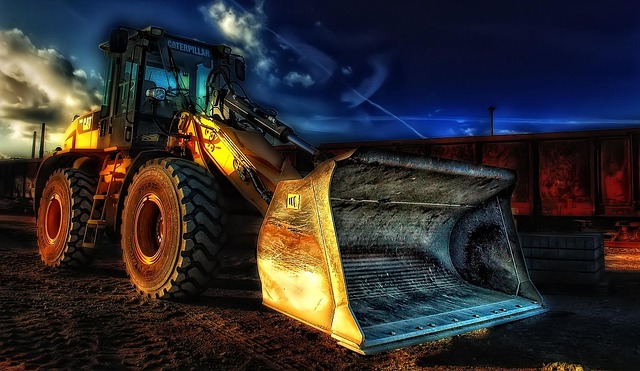Subsurface Utility Verification (SUV) is a vital process ensuring safe and precise excavation in urban areas, using advanced technologies like ground-penetrating radar (GPR) and electromagnetic location (EML) to accurately map underground utilities. This method minimizes infrastructure damage, enhances worker safety, and protects the public by providing comprehensive data integration into digital maps, enabling efficient navigation of projects and reducing disruptions during construction. SUV is crucial for achieving strategic risk mitigation in dynamic urban environments with constant changes in critical infrastructure.
In today’s construction landscape, ensuring site safety is paramount. However, traditional methods of identifying and managing underground utilities often lead to risks and challenges, such as accidental damage and service disruptions. This article explores the transformative potential of subsurface utility verification through precise exposure techniques. We delve into the necessity of advanced technology for accurate utility location and mapping, offering strategies to enhance site safety and streamline construction processes by addressing this critical aspect of project management.
Understanding Subsurface Utility Verification: The Need for Precise Exposure
Subsurface Utility Verification (SUV) is a critical process that ensures safe and precise excavation, especially in urban areas where critical utilities are buried beneath the ground. It involves identifying and marking the location of underground pipes, cables, and other essential services before any construction or excavation work begins. The need for precise exposure in SUV cannot be overstated; it’s not just about avoiding damage to vital infrastructure but also ensuring the safety of workers and the public.
In today’s digital era, where complex utility networks underlie our cities, accurate SUV is more crucial than ever. Traditional methods often relied on visual inspection and crude tools, leading to potential errors and costly mistakes. However, advancements in technology have revolutionized this process, enabling professionals to employ precise exposure techniques that enhance safety and efficiency. These modern approaches include using advanced locating devices, ground-penetrating radar, and other sophisticated tools to map out the subsurface utility landscape, ensuring that any excavation project is carried out with complete awareness of what lies beneath.
Identifying Risks and Challenges in Traditional Site Safety Practices
In traditional site safety practices, identifying risks and challenges often involves a combination of experience, intuition, and time-consuming manual checks. This approach can be imprecise, leading to potential hazards that are easy to overlook, especially in complex underground landscapes. One significant challenge is ensuring comprehensive subsurface utility verification, which is crucial for projects involving excavation or construction near existing utilities like gas lines, water pipes, and electrical cables. Without accurate knowledge of these utilities’ locations and conditions, even minor construction work can pose severe risks, including damage to critical infrastructure and safety hazards for workers.
Furthermore, traditional methods struggle to keep pace with the dynamic nature of urban environments where infrastructure is constantly evolving. As new utilities are installed or existing ones are modified, maintaining up-to-date records becomes increasingly difficult, further complicating risk assessment. This situation demands a more strategic and efficient approach to site safety, one that leverages advanced technologies like precise utility location systems to enhance accuracy and speed in identifying and mitigating risks.
Implementing Advanced Technology for Accurate Utility Location and Mapping
Implementing advanced technology, such as Ground Penetrating Radar (GPR) and remote sensing, revolutionizes the process of identifying and mapping subsurface utilities. These tools offer precise locations and detailed images of underground infrastructure, ensuring accurate utility exposure management. By integrating this data into digital maps, construction teams can navigate with confidence, minimizing the risk of damaging critical services like water pipes, electric cables, or gas lines.
GPR technology, in particular, has become a game-changer in subsurface utility verification. It provides real-time, non-invasive data, allowing professionals to precisely locate and document utilities before any excavation begins. This advanced location method enhances safety by enabling workers to make informed decisions, reducing the chances of accidental damage or service disruptions during construction projects.
Strategies to Enhance Site Safety through Effective Utility Exposure Management
To enhance site safety, effective management of utility exposure is crucial. Subsurface utility verification plays a pivotal role in this process by ensuring that utilities like gas lines, water mains, and power cables are accurately identified and mapped before any construction or excavation begins. This involves utilizing advanced technologies such as ground-penetrating radar (GPR) and electromagnetic location (EML) to create detailed digital maps of underground infrastructure.
By integrating these verification methods into site safety protocols, construction teams can significantly reduce the risk of damaging critical utilities. Accurate utility exposure allows for more precise planning, including rerouting or marking utilities to avoid excavation sites whenever possible. This not only minimizes safety hazards but also expedites project timelines and reduces costs associated with unexpected utility disruptions.
In conclusion, precise utility exposure through advanced subsurface utility verification is a game-changer in enhancing site safety. By identifying and mitigating risks associated with traditional practices, this innovative approach allows for effective management of utility locations and mapping. This not only prevents damage to vital infrastructure but also fosters a safer, more efficient construction environment, ensuring that every project navigates beneath the surface with confidence.
